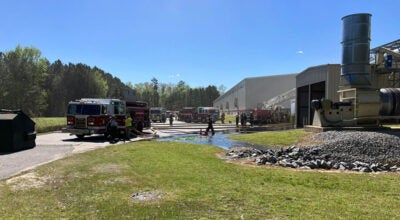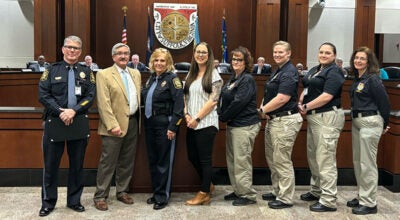Hunting ‘River Rats’
Published 8:32 pm Monday, April 14, 2014

Jamie Brunkow, a riverkeeper with the James River Association, patrols Bennett’s Creek on a breezy Monday morning. Brunkow is looking to recruit some River Rats from Suffolk to watch out for environmental problems on local waterways.
Jamie Brunkow has a lot of river to monitor — the tidal portion of the James, from the fall line in Richmond to the Chesapeake Bay.
With the James River Association, he’s one of two riverkeepers: full-time, on-the-water advocates protecting and defending the aquatic environment. The program started with New York’s Hudson Riverkeeper in 1983.
“We are sort of like our own separate thing,” Brunkow said of his and — responsible for the upper James — Pat Calvert’s role within the JRA.
He and Calvert together monitor 340 miles of river, “not to mention all the tributaries and shoreline,” according to Brunkow.
It’s a big task, but they do have volunteers helping. River Rats, as they are known, are citizens who defend waterways, and Brunkow is looking to recruit some from Suffolk.
“It varies on a case-by-case basis,” Brunkow said of the types of things River Rats detect. “We have had some remarkable cases,” such as folks discharging raw sewage into the river “for decades and no one realizing it.”
That case was resolved after being reported to the Virginia Department of Environmental Quality, he said.
Other examples included illegal clearing in the buffer zone alongside waterways and a car wash that had been discharging directly into a creek, he said.
“The River Rats are a force to get out and explore these things,” he said, adding that what they detect isn’t always an “enforceable action.”
“A lot of times, they recognize something somebody’s doing that’s not the best for the river and engage in (a) conversation. That’s what we want to go for: change somebody’s mind,” instead of looking immediately to enforcement and penalties.
River Rats are empowered to act on their own in certain cases, Brunkow said, such as a retired police chief in Lynchburg who “knew exactly who to call” in the county government when he noticed illegal clearing around the river.
But, he said, a “firewall” mostly shields them: They report back to the JWA, which takes it from there.
Brunkow isn’t looking specifically for volunteers with a marine science, law enforcement or any other type of specialist background. “We very rarely turn anybody down if they want to try it,” he said. “The vast majority are people who fish … or who live on the water.”
There are requirements: Three patrols a year, which could include hiking along a chosen waterway, according to Brunkow.
Volunteers also need an annual “action project,” which, at the most basic level, Brunkow said, could be setting up an information booth at a local festival or farmers’ market two or three times.
Action projects can also be more absorbing, such as a River Rat in Newport News who marked every municipal storm water drain saying that it flowed into the Chesapeake Bay, a project the city eventually took over, Brunkow said. Another was establishing fishing line recycling stations.
“It’s a very warm-and-fuzzy group,” he said. “We are very excited about these things.”
Becoming a River Rat involves a half-day of training, and the next local session is on May 3 in Smithfield — which already has a couple of River Rats, Brunkow said — at the Smithfield Innovation Center, 401 N. Church St., from 9 a.m. until 2 p.m.
Applications can be downloaded at www.jamesriverassociation.org/get-involved/volunteer/riverrats.
The JRA, Chesapeake Bay Foundation, Nansemond River Preservation Alliance and other such groups work together for the common good of the environment, Brunkow said.
Commonwealth agencies and local governments cannot be out inspecting all waterways and shorelines all the time, he said.
“Having these extra eyes on the river is extremely important,” he added.





